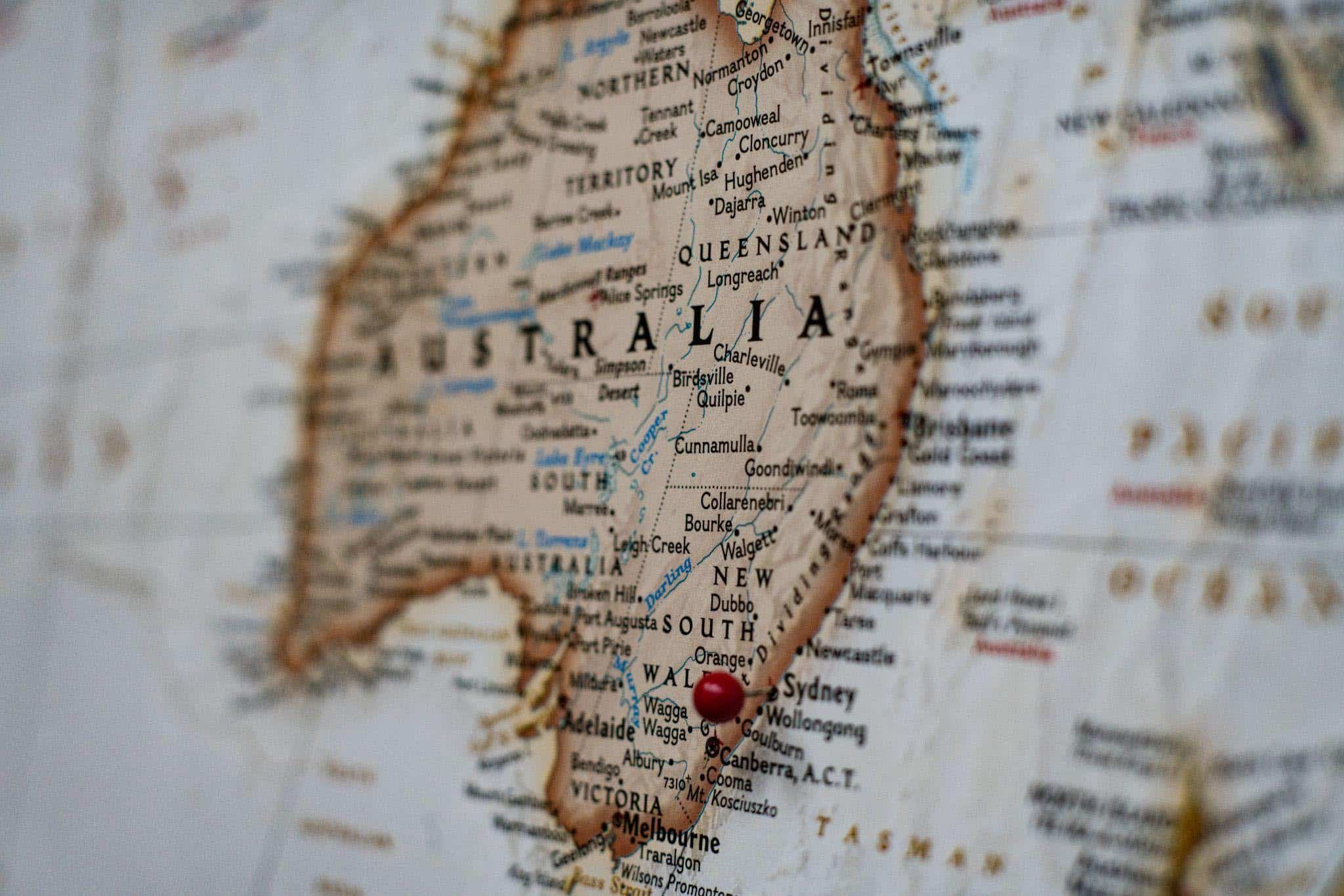Unveiling Australia’s Rental Landscape: Top 10 Most Affordable Regions in 2023

No one can deny that life is becoming more and more expensive. Our grocery bills have skyrocketed, more and more people are cutting back on recreational activities, and housing is almost unobtainable. We are all feeling it, and we are not alone. The Australian rental market is exceptionally volatile right now, with renters trying to cope with the rising costs. Over the past few years, rents have been climbing steadily, creating a crisis that has affected the lives of many Australians. This rental crisis has started to influence socio-economic issues nationwide.
This article will give you a clear picture of the current Australian rental market, pinpoint the most and least affordable places to rent in the country, and unpack the implications these findings hold for renters and policymakers.
Affordable Areas to Rent Across Australia in 2023
Key Findings:
- The average rent in Australia has been on a consistent upward trajectory in recent years.
- The government has implemented measures to combat the rental crisis, but they have fallen short of making an impact.
- Melbourne seems to offer the most affordable places to rent, while regional areas are less affordable.
- The factors driving up rents include low housing supply, high demand for rental properties, investor demand for property, and government policies that favor investors over renters.
- In the past three years, the average weekly rent in Australia has increased by 10%.
- The rental crisis is having a significant impact on the mental and physical health of renters.
- The government needs to increase the supply of social housing, provide financial assistance to renters, and introduce rent control.
- Renters need to know their rights.
Average Rent in Australia in 2023
Over the past three years, the average rent in Australia has skyrocketed by a staggering 10%. That equates to an increase from $470 per week in 2020 to $520 in 2023. Rising living costs seem to have become an unwelcome trend in many developed nations, thanks to inflation, demand for rental properties, and increasing property prices.
The epicenters of these rental storms are mainly in Sydney and Melbourne. These two vibrantcities, with their bustling energy and countless opportunities, also have the highest average rentsin the country. It’s no surprise, given the allure of urban living spaces, which offer proximity toemployment hubs, renowned educational institutions, and many amenities.
Whether you want a beachside apartment in Sydney or a chic loft in Melbourne, you need tounderstand the rental market dynamics. By uncovering the most and least affordable places torent, we can highlight the challenges renters face nationwide. This empowers renters andpolicymakers to work towards a fair and sustainable rental landscape.
The Rental Crisis

The rental crisis in Australia is not a standalone issue. It’s part of a global trend and profoundly affects the standard of living for many Australians. The root causes are:
Low housing supply: Demand for housing is outstripping supply, which drives up prices. This is partly due to population growth and urbanisation trends.
High demand for rental properties: The need for rentals is exceptionally high in urban areas,where employment opportunities tend to be concentrated.
Investor demand for property: Real estate remains a popular investment choice, often seen asa secure and lucrative option, worsening the issue by reducing the supply of rental properties.
Government policies that favor investors over renters: Some policies, such as tax benefitsfor property investors, can encourage property investment and speculative buying, contributing toprice increases
Government Response
The government has been trying to ease the crisis by increasing the supply of social housing, providing financial assistance to renters, and introducing rent controls. However, these measures have only been partially effective.
Social housing initiatives often take years to implement and may not meet the demand quickly enough. Financial assistance can temporarily relieve renters but does not address the underlying issues.
Rent control can help make housing affordable for some renters but could discourage property investment, leading to decreased rental property availability.
Rental in Australia

Here is a list of the ten most and ten least affordable areas in Australia, in terms of rental. The final score for each location is calculated from factors like the number of renters, average income, changes in rent since March 2020, and rent cost. A lower score means less affordability due to high rent or significant rent increases. In comparison, a higher score signals more affordability.
The 10 Most Affordable Places to Rent in Australia in 2023
Melbourne – Inner
Melbourne – Inner tops the list as the most affordable place to rent in Australia in 2023, boasting a median weekly rent of $685 and earning an impressive score of 85. Despite being located in a major city, the rent here is relatively affordable. Furthermore, residents enjoy various amenities such as restaurants, bars, and convenient public transportation options.
Melbourne – West
Earning a score of 81.6, Melbourne – West emerges as the second most affordable place to rent. With a median weekly rent of $439, this area offers cost-effectiveness despite its prominence. Residents benefit from top-class facilities, including dining establishments, shops, and readily accessible public transportation.
Australian Capital Territory
Scoring 80.7 on the datasheet, the Australian Capital Territory takes third place for affordability. It stands out for its relatively low median weekly rent of $651, particularly noteworthy considering the territory’s compact size.
Melbourne – Inner South
With a score of 79.6, Melbourne – Inner South secures the fourth spot on the list. The average weekly rent here is $702, a quite reasonable rate for a major city like Melbourne.
Melbourne – North East
Occupying the fifth spot with a score of 78.8, Melbourne – North East boasts a median weekly rent of $477. This represents highly affordable rent, especially for a bustling city like Melbourne.
Melbourne – Inner East
Despite its desirable location within Melbourne, the Inner East district ranks sixth in terms of affordability with a score of 78.4. The rental prices in this area remain relatively budget-friendly.
Queensland – Outback
Scoring 77.4, Queensland – Outback lands in seventh place. Despite its remote, rural location within Queensland, it offers a notably affordable cost of living with a median weekly rent of $362. Essential amenities and public transportation are available to residents.
Melbourne – North West
Melbourne – North West, scoring 75.2, ranks eighth on the list. Its median weekly rent of $466 is reasonable, given the area’s status as a part of a central metropolitan area.
Melbourne – Outer East
Ninth on the list with a score of 74.3, Melbourne – Outer East maintains a relatively affordable average weekly rent of $529. This rate is impressive, considering Melbourne’s status as a major city.
Western Australia – Wheat Belt
Securing the tenth spot on the list with a score of 74.2, Western Australia – Wheat Belt boasts an average weekly rent of $378. Despite its rural location within Western Australia, this region represents a highly affordable living option. It provides residents with essential amenities and public transportation.
The 10 Least Affordable Places to Rent in Australia in 2023
Richmond – Tweed
Scoring 40, Richmond – Tweed is the least affordable place to rent in Australia in 2023. Its average weekly rent is $711. Even though it is located in a regional part of New South Wales, its appealing facilities and scenic landscapes make it a popular choice among tenants.
Gold Coast
The Gold Coast, with a score of 40.5, ranks as the second least affordable place. With a median weekly rent of $791, this location is known not only for its attractive features like surf beaches, theme parks, and nightlife but also for its high cost of living.
Sunshine Coast
The Sunshine Coast stands third on the list with a final score of 43.7, and a median weekly rent of $711. It is a well-liked tourist destination, admired for its beach resorts, rural hinterland, and relaxed lifestyle, making it the third least affordable place to rent.
Coffs Harbour – Grafton
With a score of 47, Coffs Harbour – Grafton secures the fourth spot. This regional area in New South Wales has a median weekly rent of $561. Despite the high rent, tenants are drawn to its natural beauty and available amenities.
Mandurah
Scoring 48.4, Mandurah is the fifth least affordable place on the list, demanding a median weekly rent of $504. Even though it is part of regional Western Australia, Mandurah is favored for its canals, wildlife, and attractive waterfront lifestyle.
Mid North Coast
Mid North Coast follows with a final score of 50.4 and an average weekly rent of $508. While it is a regional area in New South Wales, the appeal of its natural attractions and amenities drive up rental prices.
Sydney – Eastern Suburbs
Sydney’s Eastern Suburbs, with a score of 50.9, rank seventh as the least affordable place to rent in Australia in 2023. With an average weekly rent of $1,289, these suburbs are sought after due to their proximity to the city center, beaches, and the amenities they provide.
Bunbury
Bunbury, with a score of 51, places eighth on the list. It is a regional part of Western Australia, known for its wildlife, waterfront lifestyle, and excellent facilities, and it commands a median weekly rent of $525.
Western Australia – Outback (North)
With a score of 51.2, Western Australia’s northern outback is the ninth least affordable place to rent in 2023. Despite its remote location, this area, with a median weekly rent of $765, offers a variety of amenities and unique attractions like national parks and indigenous culture.
Moreton Bay – North
Earning a score of 52.1, Moreton Bay-North is the tenth least affordable place to rent in Australia in 2023. With an average weekly rent of $519, this part of Queensland is popular for its beautiful bay, islands, and comfortable suburban lifestyle.
Insights and Implications
Based on the data, it’s obvious that rent in Australia has been steadily increasing. This rise in rent prices has become a central issue in Australians’ socio-economic challenges. Despite the government’s attempts to address the problem, their efforts have not yielded significant results. Interestingly, Melbourne is a more affordable option for renters, while regional areas pose more substantial affordability challenges.
These findings hold important implications for both renters and policymakers. Renters must remain informed about the ongoing escalation of rent prices and take proactive steps to safeguard themselves from potential financial hardships.
Meanwhile, policymakers must continue finding more effective and sustainable solutions to tackle the rental crisis and ensure that affordable housing remains accessible to all. By working together, we can strive for a future where the burden of high rents is alleviated, and Australians can secure affordable and stable housing.
In Conclusion
The Australian rental market presents renters and policymakers with formidable challenges to overcome. With rents consistently rising and the rental crisis looming large, all stakeholders must confront this issue directly.
Despite its complexities, understanding the present market conditions and the drivers behind escalating rents is crucial. This understanding serves as the foundation for effective solutions, paving the way toward greater affordability and accessibility of housing for everyone.
Methodology
This study analyzed Australia’s 88 SA4 areas (Statistical Area Level 4) to assess their rental affordability. Each area was then analyzed on the following factors, giving each area a normalized score out of 100. Once the scores were normalized, we calculated each area’s overall performance. To achieve this, we combined the individual scores, considering their respective weights assigned based on their importance.
By applying appropriate weights to the normalized scores, we created a composite score for each state. The final composite score, ranging from 40 to 85 (to give a more realistic view for the readers), reflects a statistically meaningful assessment of the area’s overall affordability.
The individual scores for each feature are not stored in the final dataset but rather just the actual feature values. The data was taken from the Australian Bureau of Statistics.
The criteria are as of below:
- Renting Population: The renting population of each SA4 area was collected to understand the housing demand for each area. Data was taken from the Australian Bureau of Statistics from the census data (latest available data).
- Median Weekly Income (AUD): The median weekly income for each SA4 area was obtained to gauge the income level of residents and their capacity to afford rental properties. From The Australian Bureau of Statistics, we took the median weekly income data for the latest available year.
- Rental Value Change since March 2020 (%): The percentage change in rental values since March 2020 was included to capture the impact of recent market dynamics on rental affordability. Data was taken from the Australian Bureau of Statistics from the census data (latest available).
- Median Weekly Rental Value (AUD): The median weekly rental value for each SA4 area was considered as a direct indicator of rental costs.
- Rent to Income Ratio: The rent to income ratio was calculated by dividing the median weekly rental value by the median weekly income. This ratio provides insights into the affordability of rental properties relative to residents’ income levels.
Methodology: Further Details
The actual scores are padded to 40-85 to get more realistic looking scores.
Weights for each feature are as below and are taken to be a bit more subjectively:
| Feature | Weight |
|---|---|
| Renting Population | 0.1 |
| Median Weekly Income (AUD) | 0.25 |
| Rental Value Change since March 2020 (%) | -0.2 |
| Median Weekly Rental Value (AUD) | -0.2 |
| Rent to Income Ratio | -0.25 |

